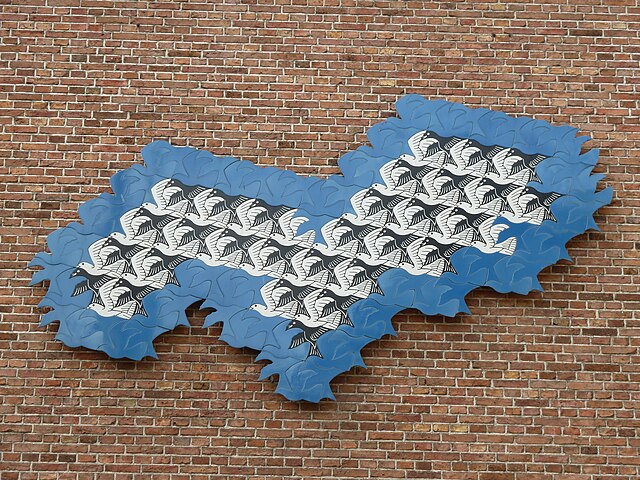A tessellation or tiling is the covering of a surface, often a plane, using one or more geometric shapes, called tiles, with no overlaps and no gaps. In mathematics, tessellation can be generalized to higher dimensions and a variety of geometries.
Zellige terracotta tiles in Marrakech, forming edge‑to‑edge, regular and other tessellations
A wall sculpture in Leeuwarden celebrating the artistic tessellations of M. C. Escher
A temple mosaic from the ancient Sumerian city of Uruk IV (3400–3100 BC), showing a tessellation pattern in coloured tiles
Roman geometric mosaic
A wallpaper is a mathematical object covering a whole Euclidean plane by repeating a motif indefinitely, in manner that certain isometries keep the drawing unchanged. For each wallpaper there corresponds a group of congruent transformations, with function composition as the group operation. Thus, a wallpaper group is a mathematical classification of a two‑dimensional repetitive pattern, based on the symmetries in the pattern. Such patterns occur frequently in architecture and decorative art, especially in textiles, tessellations, tiles and physical wallpaper.
Example of an Egyptian design with wallpaper group p4m
Example A: Cloth, Tahiti
Example B: Ornamental painting, Nineveh, Assyria
Example C: Painted porcelain, China








